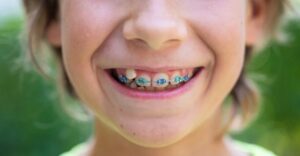A Parent’s Guide to Getting Ready for Braces
A Real-Life Story:
Nine-year-old Jack had front teeth that stuck out a little. He sometimes lisped and didn’t like smiling in photos. When his dentist suggested a visit to the orthodontist, Jack’s mom felt unsure. Was he too young? What should they expect? What should they prepare?
If you're asking the same questions, you’re not alone!
1. When Should Kids See an Orthodontist?
Most people think orthodontic treatment starts in the teenage years. But actually, the American Association of Orthodontists (AAO) recommends that kids see an orthodontist by age 7.
At this age, your child has a mix of baby and adult teeth, and early signs of problems can be spotted—even if braces aren't needed yet.
Early checkups can help:
- Monitor jaw growth
- Check for crowded teeth or bite issues
- Prevent more serious problems later
Seeing the orthodontist early doesn’t mean your child will get braces right away—it just means the orthodontist can plan ahead.
2. What Should Parents Prepare Before the First Visit?
Make a List of Concerns
Think about questions like:
- Are the teeth crowded or sticking out?
- Does your child have trouble chewing?
- Do they breathe through their mouth or snore?
- Do they have habits like thumb sucking or tongue thrusting?
Write these down to share with the orthodontist.
Bring Past Dental Info
If your child has had:
- X-rays
- Tooth extractions
- Cavity treatments
Bring those records if possible.
Talk to Your Child
Explain that this visit is just to "check the teeth"—no shots, no drills.
You could say: “The tooth doctor is just going to see how your teeth are growing.”
Choose a Qualified Orthodontist
Look for a clinic with child-friendly care and certified orthodontists. Clinics with AAO or ABO credentials are often more experienced in kids' treatments.
3. What Happens During the First Visit?
The first visit usually includes:
- A short interview to understand your child’s dental history and habits
- A dental check of the teeth, bite, and jaw
- Photos or X-rays if needed (not always)
- A treatment plan – The orthodontist will tell you if treatment is needed now or later
Use this time to ask all your questions: how long treatment may take, how much it costs, and what options are available.
4. What Advice Might You Get After the Visit?
Depending on the check-up, the orthodontist might recommend:
- Waiting and coming back in 6–12 months
- Starting early treatment (like expanders or removable appliances)
- Watching certain habits that may affect teeth (e.g., thumb sucking)
- Referring you to other specialists (like an ENT doctor if mouth breathing is an issue)
5. Helping Your Child Feel Confident
- Avoid saying “your teeth are ugly.” Instead, say, “We’ll help your smile grow strong and healthy.”
- Let your child choose things like brace colors or new toothbrushes—they’ll feel more in control.
- Share stories of other kids with braces to help them feel normal and proud.













